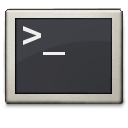#function
Article from yesterday, India News. They discuss the wave in Asia, how Hong Kong is seeing its highest infection rate in over a year. In one week, 31 hospitalizations for #COVID. This strain is now here, mainly in NYC and LA, but a COVID wave is coming to the USA next.
#CovidIsNotOver #MaskUp #LongCOVID #asymptomatic #infectious #airborne #virus #mask #face #shield #illness #disease #heart #lung #function #diminished #valve #issues #mild #infection #rates #wastewater #map https://www.indiatoday.in/health/story/covid-19-cases-surge-asia-mild-increase-india-vigilance-thailand-singapore-hong-kong-2727486-2025-05-20
Oh my have I been having fun at this Glass nerd Art Society conference.
Just recently we went to the Parlay pipe show (usually in Philly) after Susie Silbert gave an amazing talk about glass pipes. The pipes in person are really wild- the level of detail is incredible!
I have been hearing such nice things about my work and it leaves me super flattered every time. I'm thrilled to see so many glass friends and artists I admire. I bent Kacie Lees' Texas pattern a few days ago in front of some friends... Gonna pump it tomorrow before I give a demo at 10:30am- WIIFM in ruby red with wholesale bends.
Meryl Pataky and Taylor Healy gave an amazing lecture on neon conservation that had some of my work in it and made my eyes tear up it was so beautiful. Its been so fun to see old friends and make new ones! Some usernames on this other weird photo site include @alexfreschglass and @calyxann
@cocoaphony I've gone back and tested it and tearDown is being called even if the test throws.
This is with
print(" \(#function): start")
defer { print(" \(#function): end") }
in the provideScope, setUp, tearDown functions.
I guess that means the Test macro is wrapping the body and not really throwing but rather reporting the error when `provideScope` has finished running.
The test function still has to be throws so that we can write tests that throw in case of failure.
I am getting into writing PostgreSQL functions in the C language and I am particularly interested in ordered-set aggregate functions.
Is there anyone out here who can direct me in the right direction?
→ #Speedrunners are #vulnerability researchers, they just don't know it yet
https://zetier.com/speedrunners-are-vulnerability-researchers/
“Super Mario World runners will place items in extremely precise locations so that the X,Y coordinates form #shellcode they can jump to with a dangling reference. Legend of #Zelda: Ocarina of Time players will do heap grooming and write a #function pointer […] so the game “wrong warps” directly to the #end #credit sequence… with nothing more than a #game #controller and a steady #hand”
The Fourier Transform is a mathematical operation that transforms a function of time (or space) into a function of frequency. It decomposes a complex signal into its constituent sinusoidal components, each with a specific frequency, amplitude, and phase. This is particularly useful in many fields, such as signal processing, physics, and engineering, because it allows for analysing the frequency characteristics of signals. The Fourier Transform provides a bridge between the time and frequency domains, enabling the analysis and manipulation of signals in more intuitive and computationally efficient ways. The result of applying a Fourier Transform is often represented as a spectrum, showing how much of each frequency is present in the original signal.
\[\Large\boxed{\boxed{\widehat{f}(\xi) = \int_{-\infty}^{\infty} f(x)\ e^{-i 2\pi \xi x}\,\mathrm dx, \quad \forall\xi \in \mathbb{R}.}}\]
Inverse Fourier Transform:
\[\Large\boxed{\boxed{ f(x) = \int_{-\infty}^{\infty} \widehat f(\xi)\ e^{i 2 \pi \xi x}\,\mathrm d\xi,\quad \forall x \in \mathbb R.}}\]
The equation allows us to listen to mp3s today. Digital Music Couldn’t Exist Without the Fourier Transform: http://bit.ly/22kbNfi
How To Manage Bash Functions Using declare Command In Linux #Bash #Function #Linux #Linuxhowto #Linuxbasics #Linuxcommands
https://ostechnix.com/manage-bash-functions-using-declare-command/
These times are not so dissimilar to the days of the Bauhaus.
Politics can destroy beauty.
@nicklockwood I believe it’s the function “name”. It is the same form as the output of the #function macro and that is documented as:
Produces the name of the declaration in which it appears.
We now put “usefulness” first, and “beauty” as a pointless also-ran.
Marketing has run over "beauty”.
"Unravelling the hydrogen bonding patterns in telomeric G-quadruplexes: from structure to function" #chemistry #hydrogenbonding #picotechnology #DNA #structure #function https://www.tandfonline.com/doi/full/10.1080/00268976.2024.2390586
Check it out; a #webpage served from a #serverless #function that's distributed on #IPFS and executed on someone else's computer that is NOT a big-tech corpo!
https://noisy-answer-late.functions.on-fleek.app/
This is a #fleekFunction running on the #fleekNetwork, a #web3 #blockchain project. The #HTML is a #SSR #webComponent rendered by @enhance_dev
The 'Useless' Appendix Is More Fascinating Than We Thought
https://www.medscape.com/viewarticle/useless-appendix-more-fascinating-than-we-thought-2024a1000au9?src=rss&form=fpf #medicine #health #appendix #function
#powershell #function PowerShell: Add GetValueOrDefault Method to a Hashtable https://bit.ly/3QwHW0Q via PlanetPowerShell
Why Do I Need a Language Specific Runtime in a Lambda Container?
~~
ACM.303 Why doesn’t Lambda just run any OCI Compliant container?
~~
#Lambda #Function #Code #Container #Runtime
One of my #PowerShell hacks for #PowerBI just got a huge #upgrade: #Pipeline support!
In layman's terms, this means that one #function can be strung together with another function in a single PowerShell command, and the outputs from the first function feed directly into the second's inputs. The best part is that the whole chain of functions can operate as a #stream, so as soon as the first item is available, it gets passed down to the next function in the chain, which begins processing that item, while the previous function is working on the next item in the queue. It's like an #AssemblyLine for data!
Of course, now I'll have to go back and apply this technique to all of the other functions I've written previously. #NoRestForTheWicked

